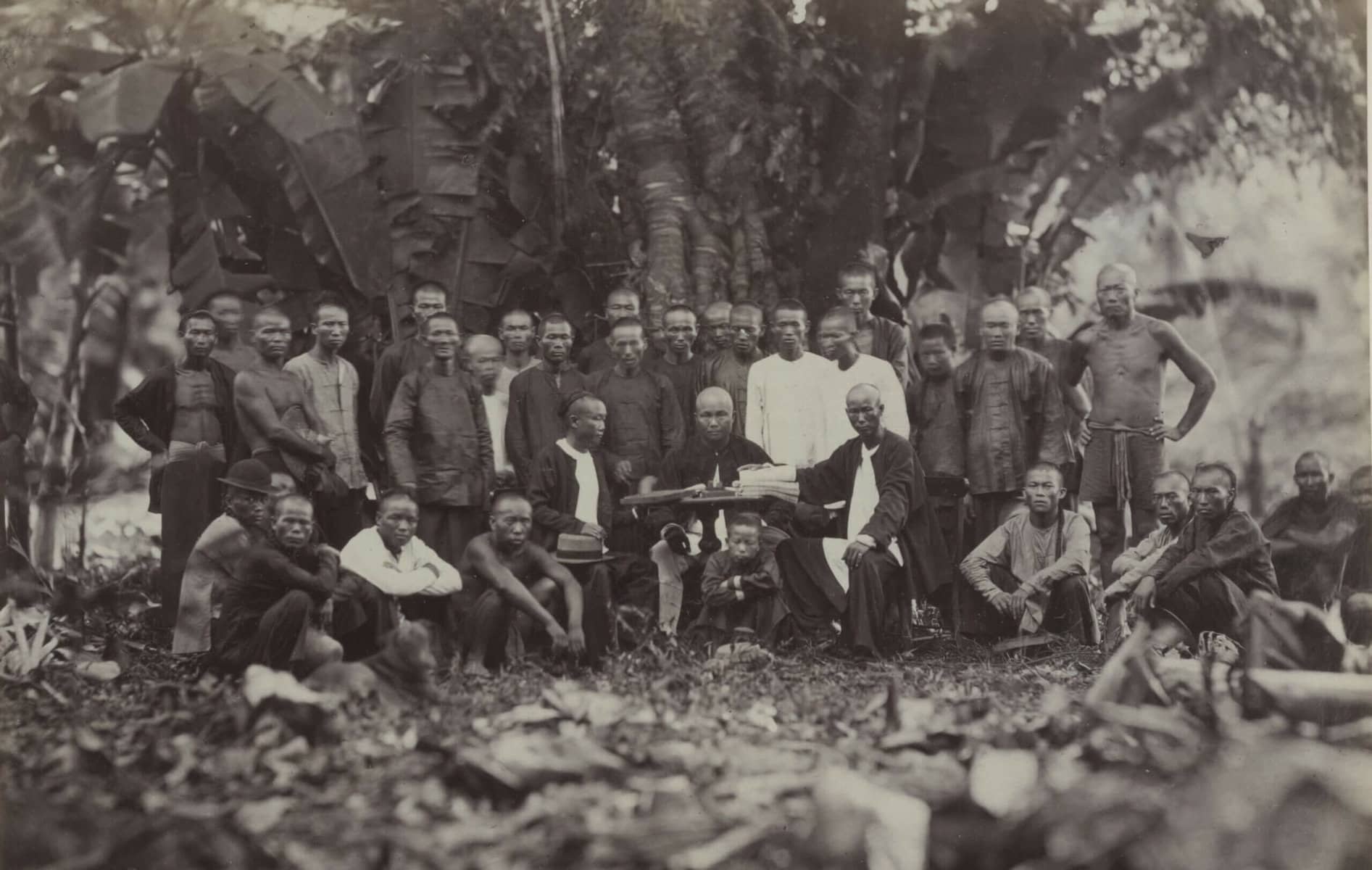|By Winnie Fok, Assistant Editor, Gale Asia|
“Coolies” (a historical term for indentured workers) are a relic of the past, no longer around today. This blog post captures the fascinating and tumultuous history of the coolie trade in brief, through the valuable primary source materials found in China and the Modern World: Imperial China and the West Part 1, 1815–1881 and China and the Modern World: Imperial China and the West Part 2, 1865–1905.
The Origins of the “Coolie” Trade
The coolie trade emerged on the coattails of the African slave trade, after its ban in the first half of the nineteenth century forced European colonies to seek cheap labour elsewhere. The trade differentiated itself from slavery in that coolie labour was contractually bound and supposedly consensual, paid, and temporary (until the terms of the contract ended—typically after a period of eight years).
China was one of the major sources of coolies to many different locations across North America, Latin America, Southeast Asia, and Oceania. The coolie trade mainly involved the British, the French, the Portuguese, the Spanish, and the Dutch—all of whom had their own coolie systems. Most coolies were recruited by local Chinese agents (called “brokers” or “crimps”) hired by their colonial customers, with the indentured labourers held in barracoons, and then shipped out of Macao. Free emigrants, on the other hand, left via Hong Kong and travelled to mostly British colonies such as Malaya, Australia, and North America.
Problems as Seen from the Press of British Hong Kong
The coolie trade became a centre of controversy after it was connected with rising cases of malpractice and even serious crime. Crimps were reported to obtain coolies—who were often poor labourers—via unlawful means like kidnapping and nefarious schemes of deception. Thus forced into labour, coolies suffered severe abuse and mistreatment while held in the barracoons and on the journey overseas. The voyages were dangerous, with coolies confined in crowded ships with poor living conditions, cruel masters, and, often, outbreaks of disease and mutinies. As a result, mortality rates were high among coolies. Even in their destination countries—most especially in Latin America—the coolie was “hard worked, badly fed, poorly clothed, separated not unfrequently from his friends and countrymen,” without support and enforcement of contractual rights in a foreign land. So great were the coolie’s troubles that suicide was a known recourse among the population.

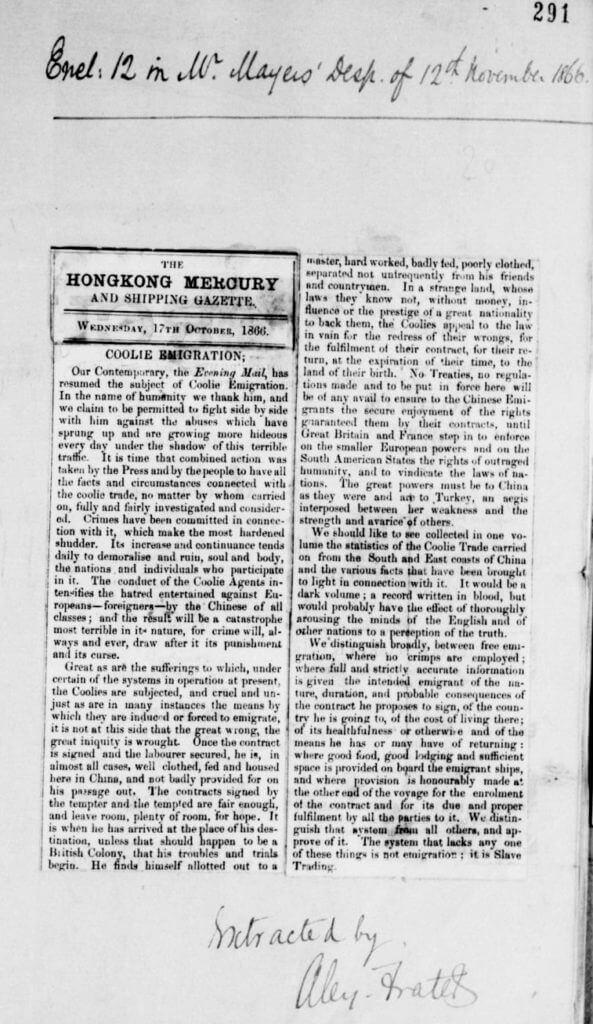
Actions by the Chinese and the British against Crimps
One practice of the Chinese crimps was to travel between Hong Kong and Macao via the river-steamers and there purchase coolies that had been unlawfully obtained. Upon discovering this, the British consulate in Hong Kong wrote to the Chinese viceroy, notifying him that kidnappers and their victims had been found aboard British steamers, and suggesting that the Chinese river police be put on the lookout for such illicit activities. Thus the two sides worked out an arrangement: The Chinese river police were instructed to search ships and steamers, including British steamers, the results of which were to be reported to the British consulate, which was willing to assist in such cases. As the consulate requested, the Chinese government also sent evidence collected by Chinese officials for the arrest of kidnappers.
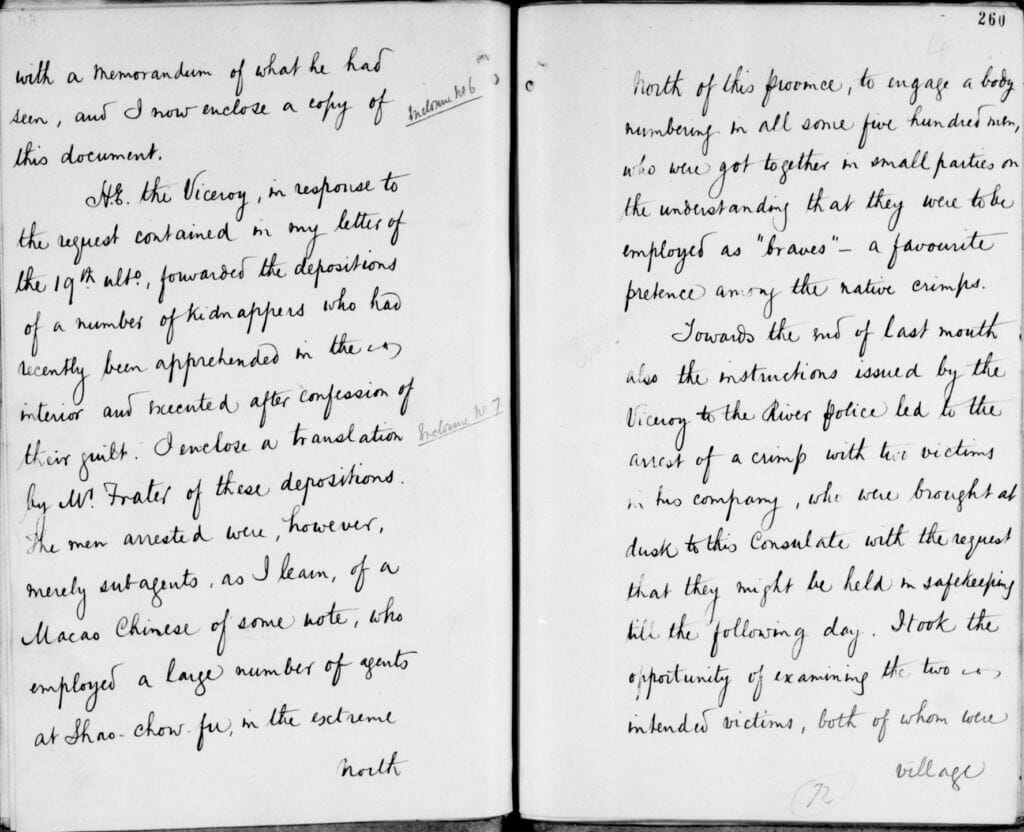
Public Debate on the Coolie Trade
A debate arose surrounding the degree of freedom in coolie labour, and whether the coolie trade truly counted as free labour or free emigration. Those opposed to the coolie trade argued that it did not qualify as emigration, defined as “the voluntary exodus of a people from their native country to settle in some distant one.” The coolie trade was frequently compared and even equated to the slave trade in all but name. Certainly the timing of the ban on slavery and the emergence of coolies suggested a strong correlation between the two. In retrospect, the discourse on coolie labour was covertly coloured by the very same dehumanizing elements inherent in slavery. Coolies were often referred to using animalistic language, were called “pigs,” and were sometimes even branded as cattle would be.
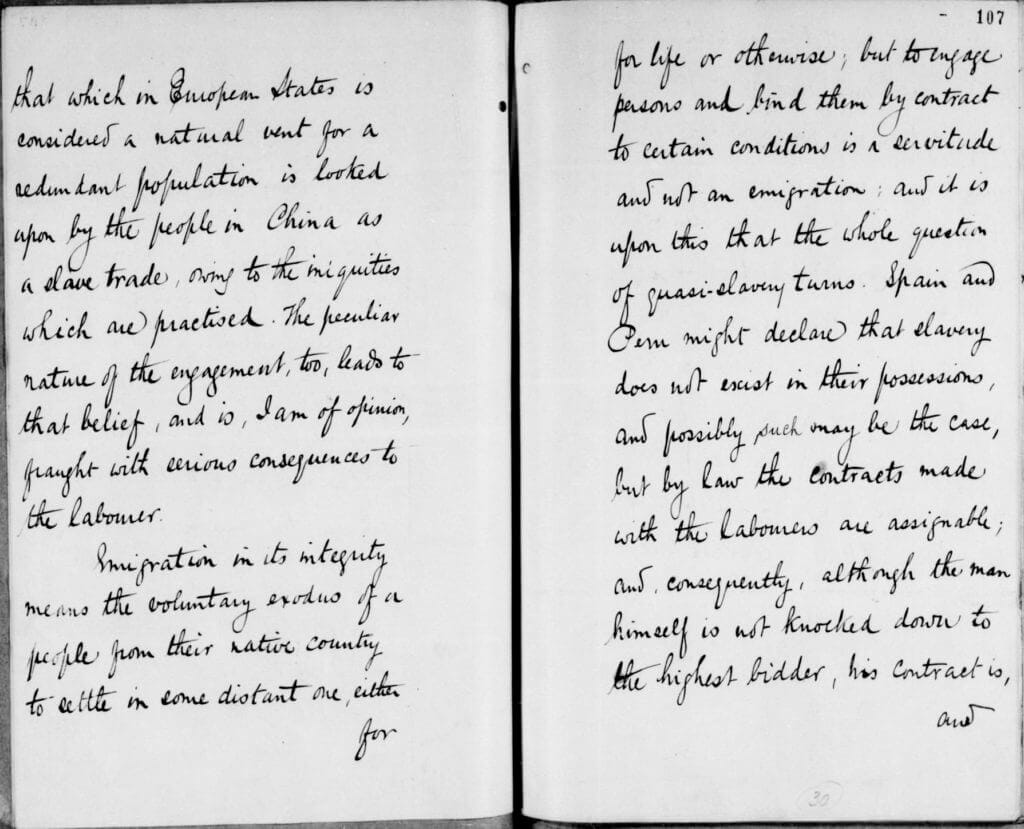
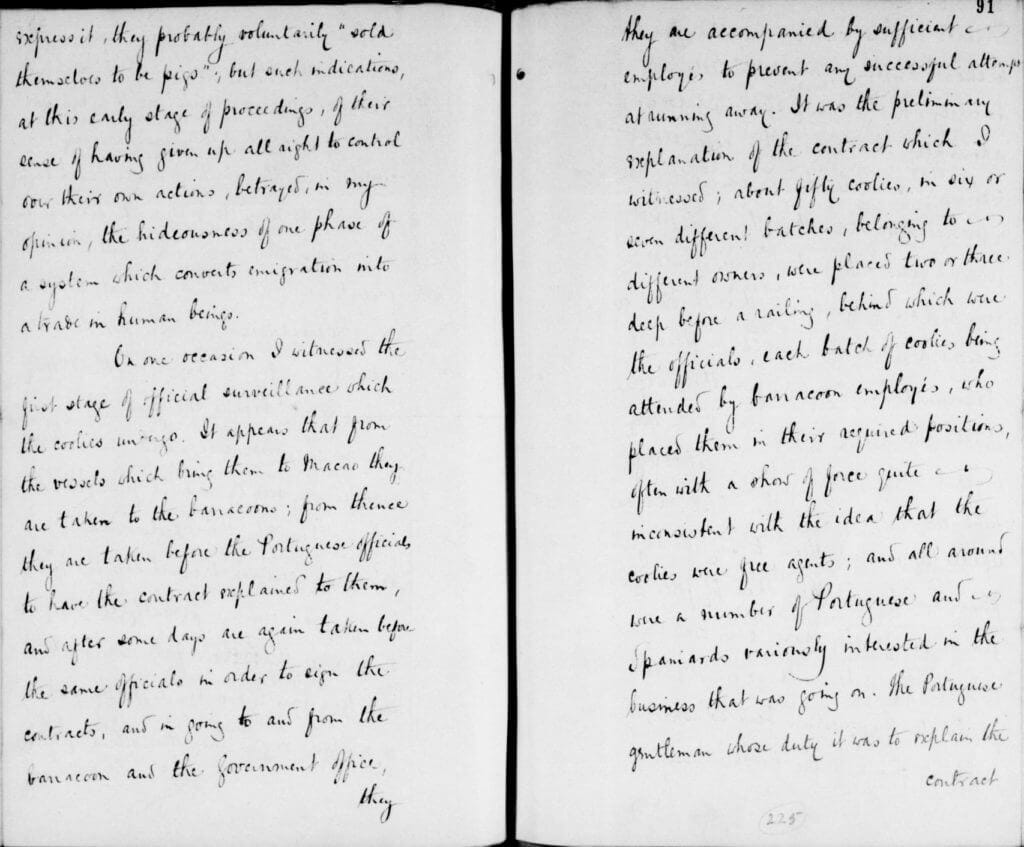
Proponents of the coolie trade argued that the design of the process was consensual by nature. They stressed that prior to embarking on the voyage to their destinations, coolies had ample opportunities to enquire about the work, were individually questioned and had to give their verbal consent to their contracts. This argument, however, ignored the realities that the coolies faced—often entrenched in poverty, under the hand of crimps, already at a halfway point on an unfamiliar journey, and in a setting that did not facilitate comfort to speak—which meant that in reality they had little choice, making consent virtually nominal.
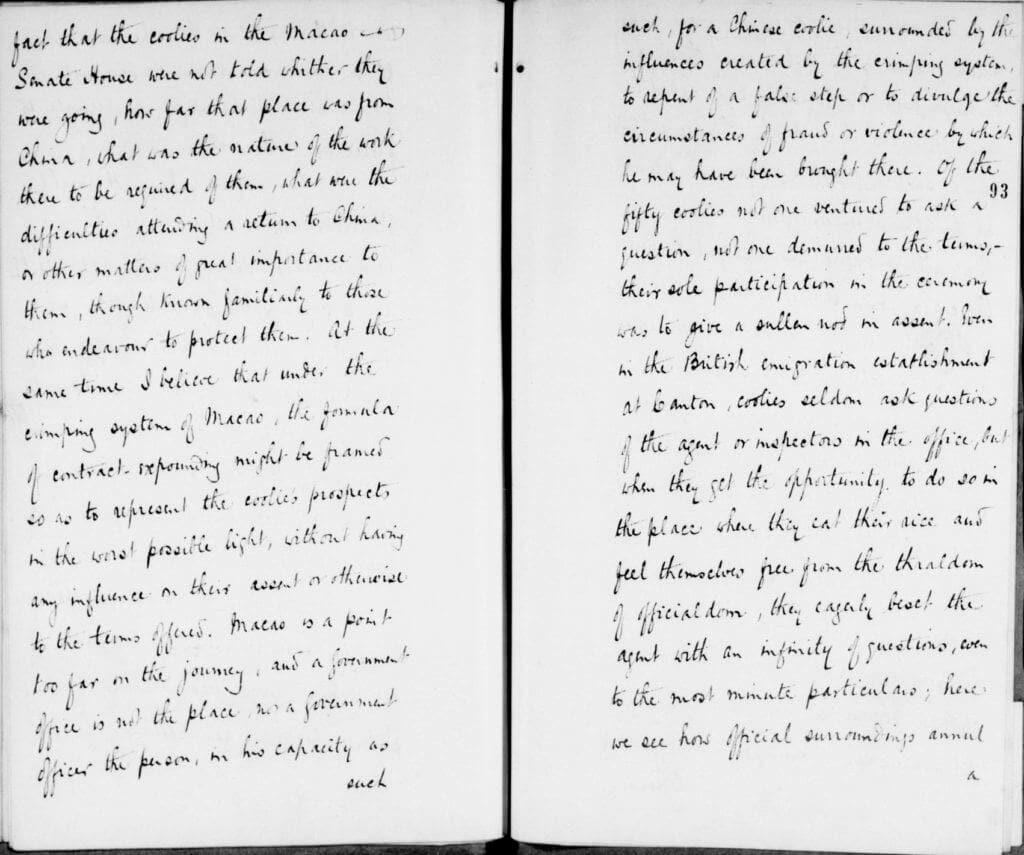
Britain’s Self-Defence of Its Coolie System
Amid the controversy, Britain insisted that the evils of the coolie trade did not apply to the British system, alleging it to be distinct from and far more upright than those of other nations. British writings and correspondences lauded the nation’s system as, “in spite of some faults, the most openly conducted, being under direct government supervision, and so far as the public can judge, not amenable to any strictures on its honesty or its humanity.” They portrayed it as a successful system of “bona fide emigration” with “purely voluntary expatriation,” where “the good treatment of the emigrant after arrival at his destination is secured by official guarantee.”
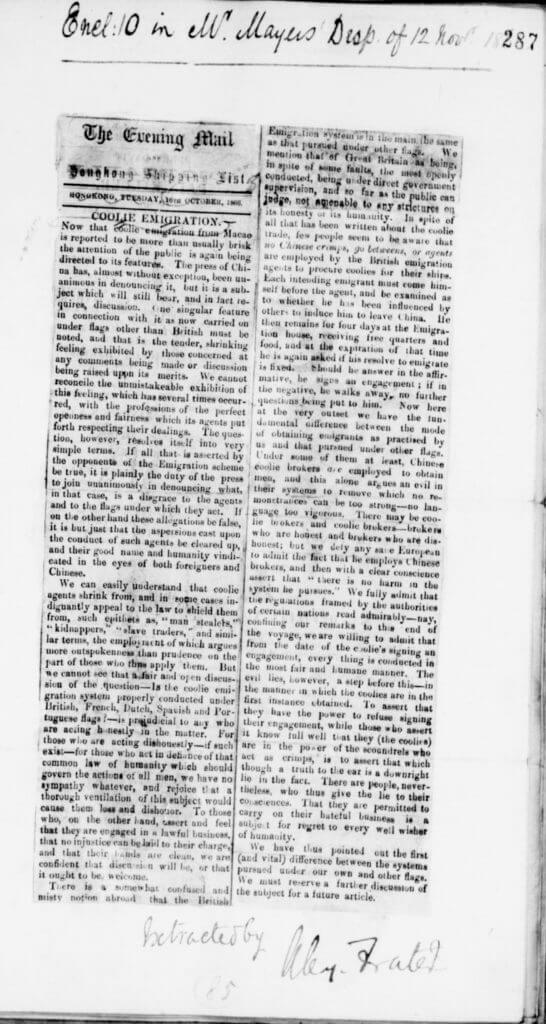
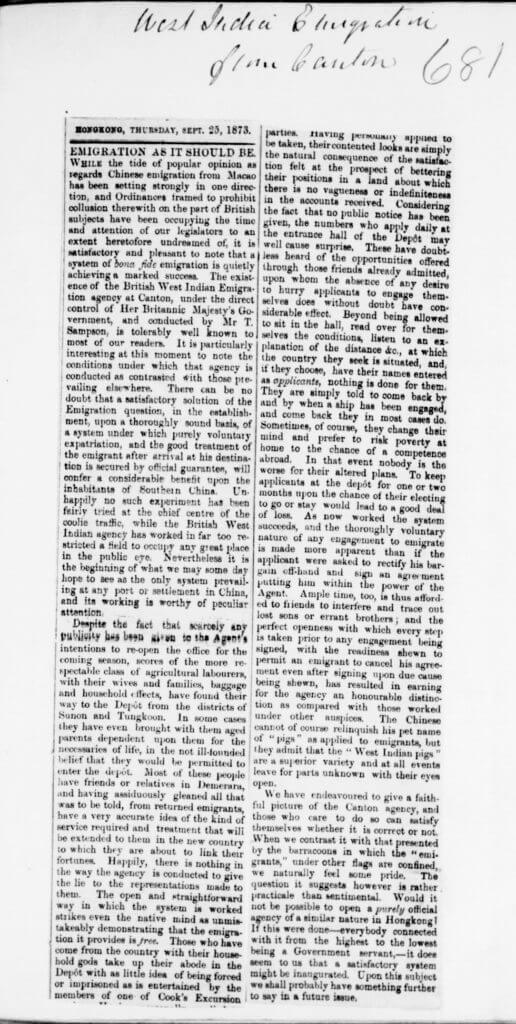
The fundamental difference highlighted was in the employment of crimps. Where they were employed in the coolie systems of other nations, the crimps often offered a significant engagement payment which, once accepted by enticed prospective coolies, essentially bound them to contractual obligations as the only means to pay back the sum. Furthermore, the use of such an intermediary agent placed the coolie at a distance from the actual site of business (the shipping house or the emigration office) where they could obtain information to aid their decision. Even the few days they were allowed to consider the arrangement were under the watchful eye and presence of the crimp who engaged them.
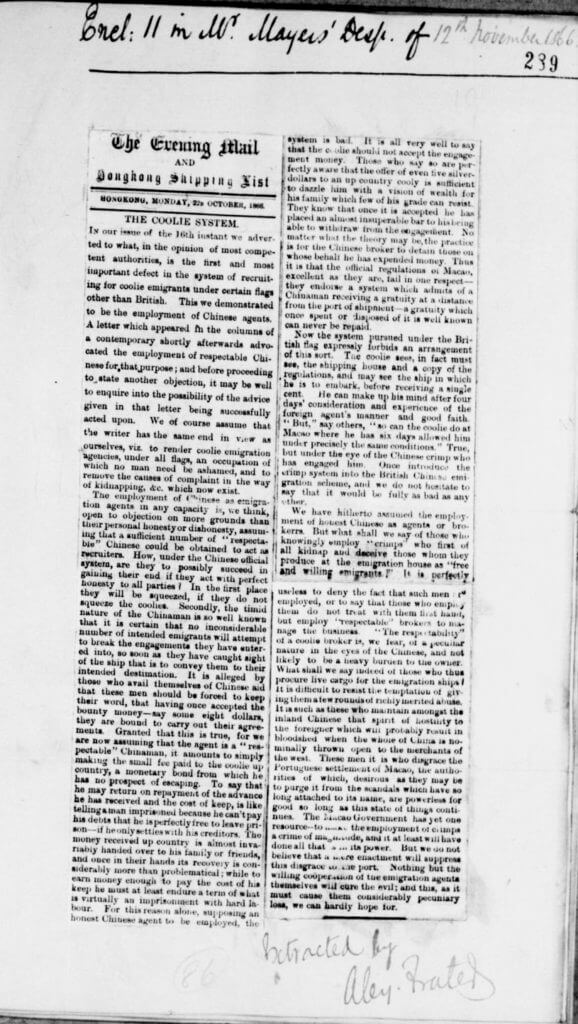
By contrast, “no Chinese crimps, go betweens, or agents [were] employed by the British emigration agents to procure coolies for their ships.” The absence of an intermediate stage, as when crimps were employed, also meant that the prospective coolies were able to obtain first-hand information at the emigration office, being required to see “the shipping house and a copy of the regulations, and […] the ship in which he is to embark, before receiving a single cent.” After a few days of consideration, coolies would make a decision without the bondage of a prior payment or the influence of a crimp. In other words, the employment of Chinese agents was identified to be the key upon which the freedom of coolie labour turned—the hinge of information and autonomy, which determined the freedom of emigration.
Thus distinguishing their own coolie system, the British tried to deflect the blame for all problems relating to the coolie trade to other European governments. Correspondences revolving around the issue at hand were careful to affirm the integrity of the government of Macao, where the bulk of reports came from. Some attributed the problem to a question of capacity, viewing the Portuguese government at Macao as having “done all that is in its power” but being “powerless for good,” “desirous as they may be to purge it from the scandals.” Others seemed to ascribe it to an issue of awareness, acknowledging the government’s severe action in dealing with cases that were brought to their attention. Nevertheless, they also recognised the centrality of the coolie trade to Macao’s economy, suggesting the prospects of any efficacious action were limited by the interests involved.
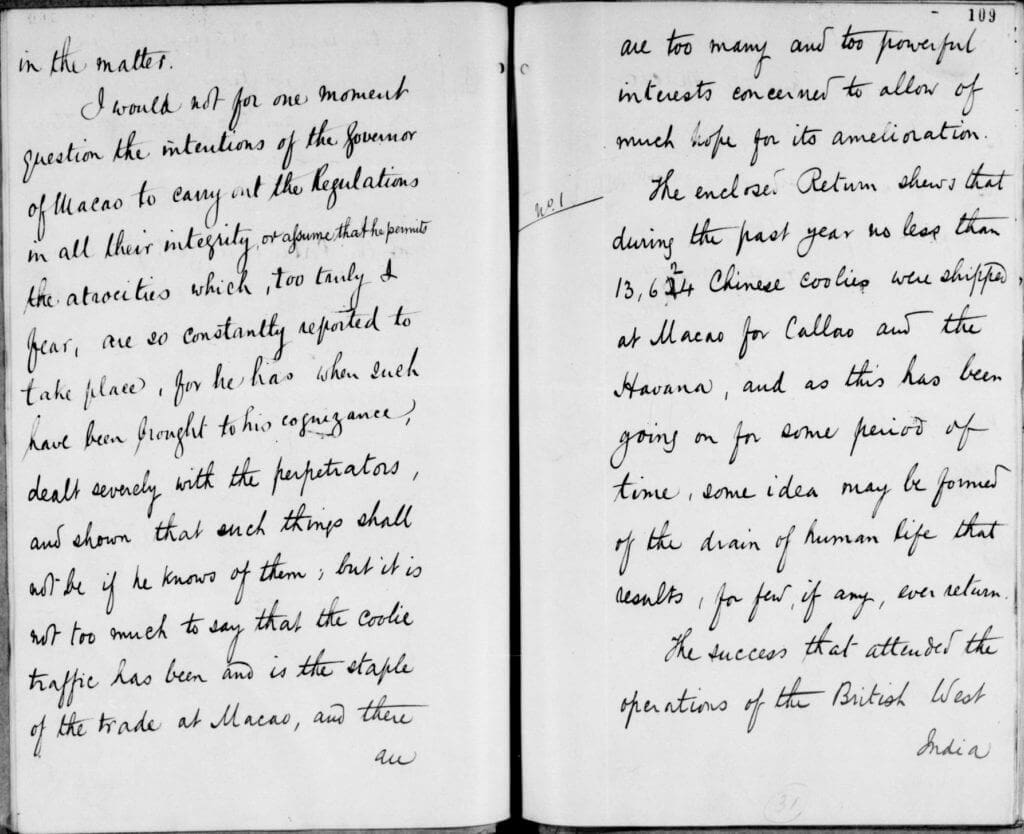
The End of the Coolie Trade
Though Britain claimed to have a superior coolie system, the truth was that many British companies were also involved in the Macao-centred coolie trade. Despite their regulations, British ships were not exempt from the still-rampant reports of crime, as it was impossible to detect all cases of kidnapping and such misdeeds. The evils of the coolie trade could not be completely eradicated.
Having been the first to experiment with coolie labour, Britain would also be the first to abolish the coolie trade. With a tortuous history far beyond the scope of this essay, the coolie trade offers a rich subject of further study which could be more deeply explored using Gale’s China and the Modern World: Imperial China and the West.
If you found this piece about the rise and fall of Chinese indentured labour interesting, you might like:
- Indentured Indian Workers and Anti-Colonial Resistance in the British Empire
- A Triumph for Humanity: William Wilberforce and the Team that ‘Bowled Out Slavery’
- Francis Barber: Samuel Johnson’s Jamaican friend
- Decolonising the Curriculum with Archives Unbound
To read more about the fascinating primary sources in China and the Modern World, try:
- The Bowring Treaty and the Opening up of Thailand
- Rediscovering China and the World in the Nineteenth Century
- George Macartney, Kashgar and the Great Game
Blog post cover image citation: Chinese Coolies and Overseers, Batakland, Indonesia, Dutch East Indies, Sumatra (1870) Dutch National Archives. https://www.nationaalarchief.nl/onderzoeken/fotocollectie/32e53ceb-c3fd-a444-b7df-aaa2855444e3

